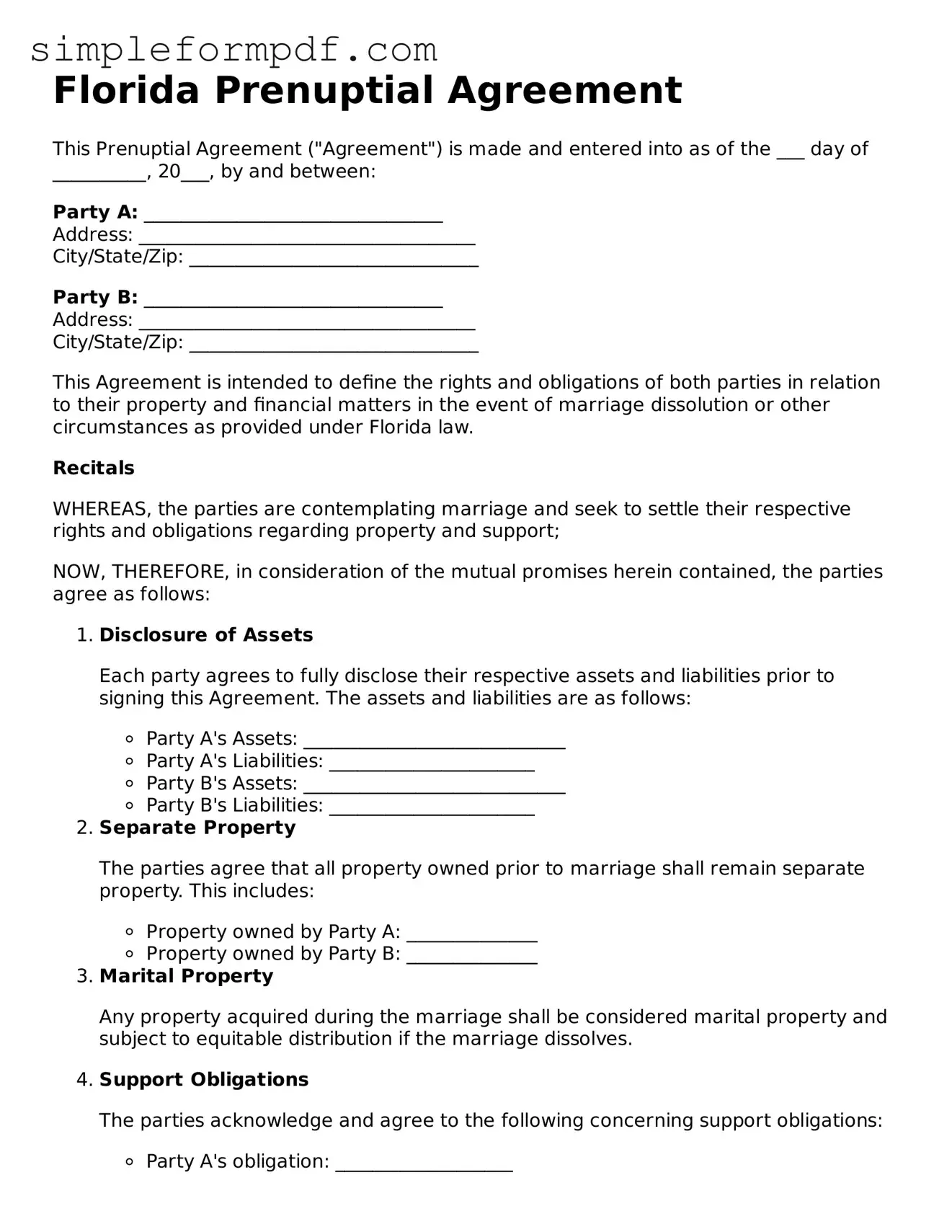Florida Prenuptial Agreement
This Prenuptial Agreement ("Agreement") is made and entered into as of the ___ day of __________, 20___, by and between:
Party A: ________________________________
Address: ____________________________________
City/State/Zip: _______________________________
Party B: ________________________________
Address: ____________________________________
City/State/Zip: _______________________________
This Agreement is intended to define the rights and obligations of both parties in relation to their property and financial matters in the event of marriage dissolution or other circumstances as provided under Florida law.
Recitals
WHEREAS, the parties are contemplating marriage and seek to settle their respective rights and obligations regarding property and support;
NOW, THEREFORE, in consideration of the mutual promises herein contained, the parties agree as follows:
- Disclosure of Assets
Each party agrees to fully disclose their respective assets and liabilities prior to signing this Agreement. The assets and liabilities are as follows:
- Party A's Assets: ____________________________
- Party A's Liabilities: ______________________
- Party B's Assets: ____________________________
- Party B's Liabilities: ______________________
- Separate Property
The parties agree that all property owned prior to marriage shall remain separate property. This includes:
- Property owned by Party A: ______________
- Property owned by Party B: ______________
- Marital Property
Any property acquired during the marriage shall be considered marital property and subject to equitable distribution if the marriage dissolves.
- Support Obligations
The parties acknowledge and agree to the following concerning support obligations:
- Party A's obligation: ___________________
- Party B's obligation: ___________________
- Amendments
This Agreement may only be modified in writing, signed by both parties.
- Governing Law
This Agreement shall be governed by and construed in accordance with the laws of the State of Florida.
- Entire Agreement
This document contains the entire agreement between the parties relating to the subject matter hereof and supersedes any prior agreements or understandings.
IN WITNESS WHEREOF, the parties hereto have executed this Prenuptial Agreement as of the date first above written.
Party A Signature: ________________________________ Date: ___________
Party B Signature: ________________________________ Date: ___________
Witness 1 Signature: ____________________________ Date: ___________
Witness 2 Signature: ____________________________ Date: ___________
